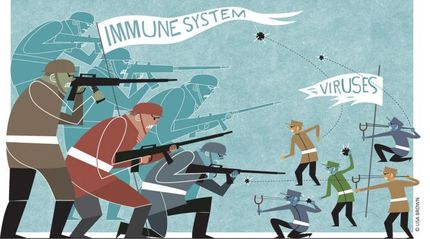Invisible enemies: Tips to ensure that viruses don’t spoil your appetite
The BfR publishes a fact sheet with recommendations on how consumers can protect themselves from viral food-borne infections
You can't see them, you can’t taste them - nevertheless, infectious virus particles can as a general rule be present on any food, if the rules of hygiene have been disregarded. Depending on the type of virus, they can cause nausea, diarrhoea with vomiting or even inflammation of the liver. "In order to protect yourself from infections with viruses and other pathogens contained in foods, it is important that food is prepared in a hygienic way", recommends Professor Dr. Dr. Andreas Hensel, President of the Federal Institute for Risk Assessment (BfR). "There are also certain foods which consumers are therefore well advised not to eat raw." The BfR has compiled an up-to-date leaflet with additional consumer tips on protection against food-borne viral infections.
What has been Germany’s most severe known outbreak of food-borne norovirus outbreak to date occurred in childcare facilities and schools in East Germany in autumn 2012. In total, almost 11,000 children and adolescents were affected. Humans predominantly contract infections with viruses through direct contact with infected people or animals. However, noroviruses, rotaviruses and hepatitis A and hepatitis E viruses in particular can also be transmitted via food. Foods that are typically affected are frozen berries, oysters and other mussels. In contrast, fresh berries distributed in Germany have not caused any outbreaks so far. During the freezing process, water is added to the berries and that could be one possible path of contamination. The BfR therefore advises against eating frozen berries, oysters and other mussels raw. Even meat and innards should, to be on the safe side, only eaten after they have been cooked.
Moreover, the results of experimental studies show that hepatitis viruses and noroviruses are more heat-resistant than most other pathogens contained in food. Nonetheless, even and complete heating of foods before they are eaten by means of cooking or frying seems to be a suitable method for reducing the risk of a food-borne viral infection. Short boiling or heating, for example in a microwave oven, can be insufficient, however. Deep-freezing food does not kill viruses.
Since even small quantities of viruses are sufficient to cause infection, preventing transmission of the pathogens via unclean hands is especially important. For this reason, washing your hands with warm water and soap after toilet use before and during meal preparation and also before meals is an important hygienic measure which helps protect yourself and others from infection. To protect yourself from disease it is also vital to avoid transmitting pathogens from one (raw) food to another ready-to-eat food. By observing simple rules of hygiene such as thoroughly cleaning kitchen utensils and the use of disposable kitchen towels it is possible to avoid the spread of viruses and other pathogens via utensils, work surfaces, knives and other kitchen utensils.
Most read news
Topics
Organizations
Other news from the department science

Get the life science industry in your inbox
By submitting this form you agree that LUMITOS AG will send you the newsletter(s) selected above by email. Your data will not be passed on to third parties. Your data will be stored and processed in accordance with our data protection regulations. LUMITOS may contact you by email for the purpose of advertising or market and opinion surveys. You can revoke your consent at any time without giving reasons to LUMITOS AG, Ernst-Augustin-Str. 2, 12489 Berlin, Germany or by e-mail at revoke@lumitos.com with effect for the future. In addition, each email contains a link to unsubscribe from the corresponding newsletter.




















































